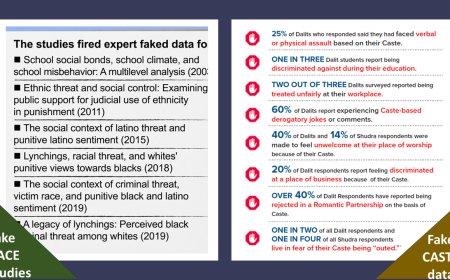Exploring Life Through the Chaturvarna System
On Janmashtami Trupti Sheth reflects on the teachings of Lord Krishna, particularly the Chaturvarna system outlined in the Bhagavad Gita. This system categorizes life roles based on qualities (gunas) and actions (karmas), rather than birthright, offering timeless wisdom for leading a balanced life. The author explores how these roles—the Seeker (Brahmin), Protector (Kshatriya), Provider (Vaishya), and Supporter (Shudra)—manifest in their own life, emphasizing the system's relevance in fostering harmony in modern society.

As we celebrate Krishna Janmashtami, it’s a time to reflect on the profound teachings of Lord Krishna and how they can guide us in our everyday lives. One of the key concepts he introduced in the Bhagavad Gita is the Chaturvarna system—a framework that categorizes life roles based on qualities (gunas) and actions (karmas), rather than birthright. This system is often misunderstood, but when explored deeply, it offers timeless wisdom for living a balanced and fulfilling life.
Let’s delve into this concept with a verse from the Bhagavad Gita that lays the foundation for understanding the Chaturvarna system:
Verse from Bhagavad Gita: Chapter 4, Verse 13
चातुर्वर्ण्यमया सृष्टं गुणकर्मविभागशः |
तस्य कर्तारमपि मां विद्ध्यकर्तारमव्ययम् ||
Transliteration:
Chaturvarnyam maya srishtam gunakarma-vibhagashah |
Tasya kartaram api mam vidhi akartaram avyayam ||
Translation:
The fourfold division of varnas was created by Me according to the three gunas and their functions. Though I am the creator of this system, know Me to be the non-doer and immutable.
My Life Through the Chaturvarna System
1. The Seeker (Brahmin):
My pursuit of Vedic knowledge and yoga reflects the Brahmin role, dedicated to spiritual wisdom and intellectual growth. This role involves deep exploration of ancient teachings and personal enlightenment.
2. The Protector (Kshatriya):
Facing challenges with courage and ethical conviction embodies the Kshatriya spirit. Whether it’s overcoming personal hurdles or standing up for justice, this role is about active leadership and moral integrity.
3. The Provider (Vaishya):
In my professional life, particularly in the corporate industry and as a teacher, I contribute to societal well-being and economic productivity. The Vaishya role focuses on providing essential services and maintaining economic stability.
4. The Supporter (Shudra):
The Shudra role involves diligent service and support, ensuring that the foundational aspects of life are maintained. From personal responsibilities to community service, this role is crucial for daily functioning and balance.
Embracing the Chaturvarna System
The Chaturvarna system is a profound concept introduced by Krishna, rooted in the principles of gunas (qualities) and karmas (actions), not by birth. This system highlights how every individual can embody different roles in life, contributing to a harmonious society.
Whether we acknowledge it or not, each of us fits into this framework. When viewed through this lens, it becomes clear how society functions and the importance of integrating these principles into our lives. Instead of creating barriers, we should recognize and apply these founding principles to navigate modern challenges.
In a world filled with divisive politics and confusion, understanding the Chaturvarna system offers a unifying perspective on how we can all contribute meaningfully. Krishna’s teachings on varna emphasize that roles are defined by qualities and actions, not by birthright.
Krishnam Vande JagadGurum!
May we all find inspiration in this profound wisdom and celebrate Janmashtami with renewed understanding and harmony.































